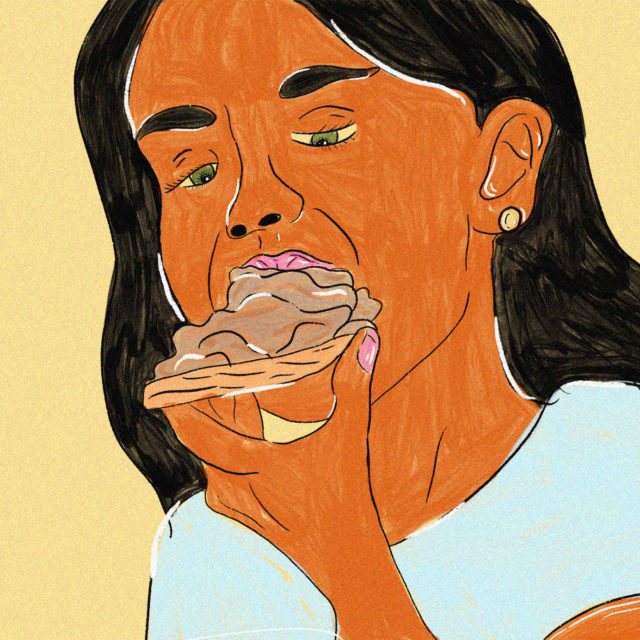Depending on your preferences, the word pâté may evoke dreamy picnics in the French countryside, or the unpleasant notion of softened meat paste being foisted upon you unsuspectingly.
Much like any other food that we now consider elegant, though, pâté started out as a genius approach to stretching out available sources of calories in a tasty way. Pâté can be traced back in French, Greek, and Roman history as early as the 11th century. Despite fancy-sounding French names for different types of pâté like “pâté de campagne,” what we’re really talking about is peasant food.
As Anthony Bourdain puts it in the introduction to the pâté de campagne recipe in his “Les Halles Cookbook,” “You’ve made meatloaf, right? You’ve eaten cold meatloaf, yes?” If so, he says, you’re halfway to pâté. Nothing to be scared of!
Pâté is the French word for “paste” or “dough.” The base of this “paste” is usually a cooked mixture of meat ground coarse or smooth. While pâté typically includes liver, it does not need to. And, much like any other traditional dish, plant-based alternatives abound — and some are tastier than others.
As with any other food, pâté may not be for everyone. An independent British study called “Can People Distinguish Pâté From Dog Food?” determined that, no, most of the subjects could not distinguish the two if they were ground to the same consistency. However, 72 percent of the subjects did rate the pâté as tastier than the dog food. Whew.
Open-minded adult eaters, though, often learn how to like foods they at first did not, thanks to continued exposure and pairings calibrated to bring out the best of the food in question. Many new cheesemongers hate blue cheese until they try it with honey, port, or smeared on a gingersnap.
With pâté, the magic seems to be acidity — when you try an umami-laden bite of pâté de campagne with cornichons and a swipe of mustard, any livery flavors disappear into rich, meaty magic. A smear of apricot jam on baguette topped with chicken liver mousse is arguably better for a lover of savory flavors than any delicate French pastry could ever be.
Pâté en Terrine
A meat mixture, usually of pork, chicken, and/or veal, wrapped in animal fat, cooked in an earthenware dish, and served by the slice either cold or at room temperature.
Drink With: Rosé or a light red like Pinot Noir.
Pâté en Croûte
Pâté cooked in puff pastry. Likely the oldest form of pâté. Originally, the pastry was simply seen as a way to protect and cook the meat — it wasn’t until the Middle Ages that the pastry was consumed along with the meat. Pâté en croûte is served both hot and cold. In Lyon, it’s often shortened to pâté croûte.
Drink With: Dry sherry or a light, fruity red wine like Gamay.
Pâté de Campagne
A more rustic pâté made with coarsely ground meat (often pork, chicken, or veal) and flavored with herbs, spices, and a drizzle of Cognac or Armagnac. If you’re squeamish about liver, pâté de campagne could be a good gateway pâté, as there’s not much liver in most recipes. It is also the easiest pâté to make at home.
Drink With: A rustic Loire red wine, or a dry stout.
Pâté de Pâques
An Easter specialty of the Poitou region encased in pastry, often with the inclusion of a hard-boiled egg.
Drink With: Sparkling wine.
Pâté Grandmère
A Gascon pâté flavored with Armagnac and prunes.
Drink With: Dry sparkling cider.
Pâté de Foie Gras
An elegant mousse considered “The King of Pâté,” but also the most controversial, as it is at least 80 percent comprised of the fatty livers of fattened geese or ducks (“foie gras” is French for “fat liver”). While geese and ducks naturally gorge themselves before the winter, foie gras is often produced by force feeding the animals, a process that has been documented as far back as 400 B.C. in Egyptian hieroglyphics. There is some humane foie gras produced today, including from the Hudson Valley in New York. (You may also be familiar with the less decadent, more affordable chicken liver mousse.)
Drink With: Sauternes (the classic pairing), or anything with a bit of sweetness and acidity.
Pâté Chaud
A French-inspired Vietnamese pâté served warm. It is also called bánh patê sô, meaning “hot pastry.”
Drink With: Pilsner.
